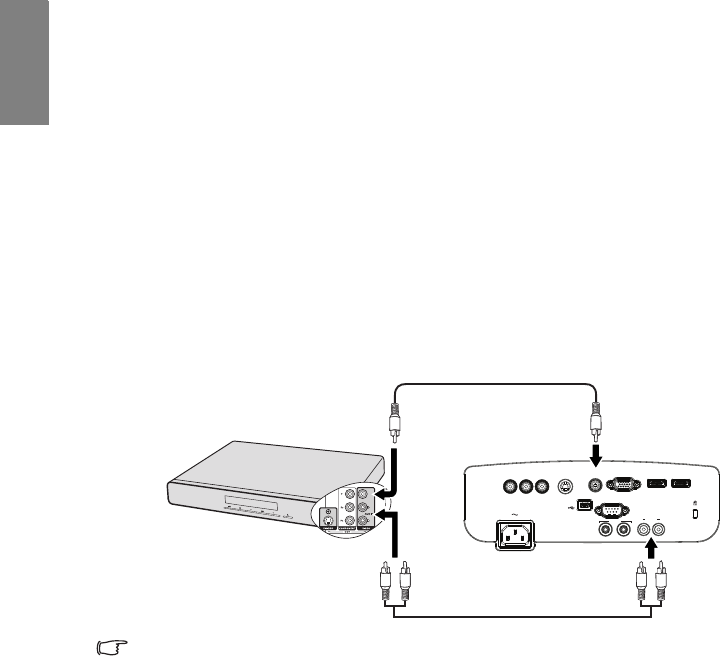
Connections24
English
Connecting Composite Video source devices
Examine your Video source device to determine if it has a set of unused composite Video
output sockets available:
• If so, you can continue with this procedure.
• If not, you will need to reassess which method you can use to connect to the device.
To connect the projector to a composite Video source device:
1. Take a Video cable and connect one end to the composite Video output socket of the
Video source device.
2. Connect the other end of the Video cable to the VIDEO socket on the projector.
To connect the projector to an Audio source device:
1. Take a suitable audio cable and connect one end to the AUDIO OUT jack of the AV
device. Connect the other end of the cable to the AUDIO IN jack on the projector.
Once connected, the audio can be controlled by the projector On-Screen Display
(OSD) menus. See "Adjusting the sound" on page 42 for details.
The final connection path should be like that shown in the following diagram:
• If the selected video image is not displayed after the projector is turned on and the correct
video source has been selected, check that the Video source device is turned on and
operating correctly. Also check that the signal cables have been connected correctly.
• You need only connect to this device using a composite Video connection if HDMI and
Component Video and S-Video inputs are unavailable for use. See "Connecting Video
source devices" on page 20 for details.
S-VIDEO VIDEO HDMI-1 HDMI-2
COMPUTER
PC
RS-232
USB
AUDIO
OUT IN
L AUDIO R
COMPONENT
AV device
Audio Cable
Video Cable


















